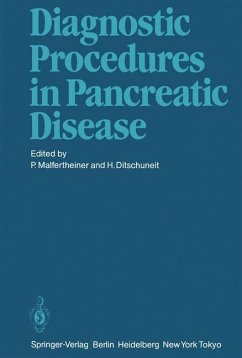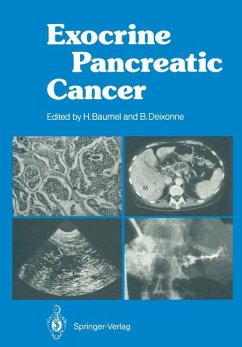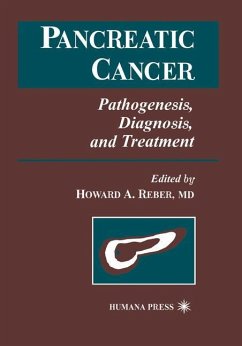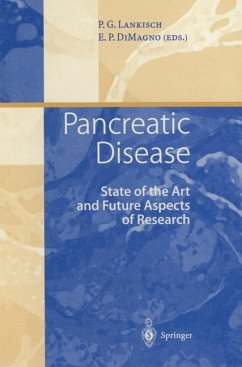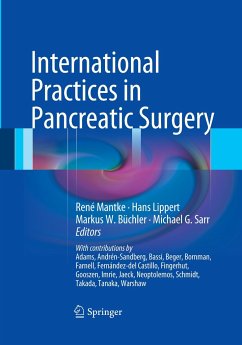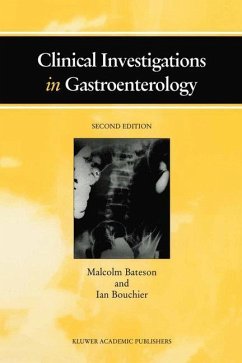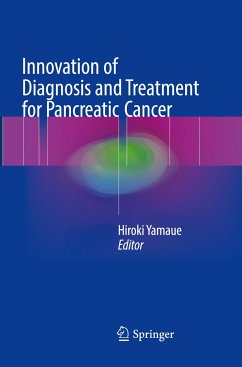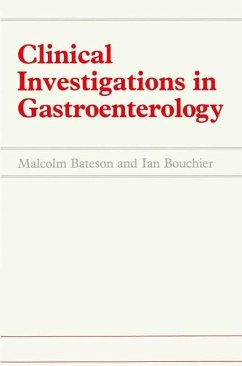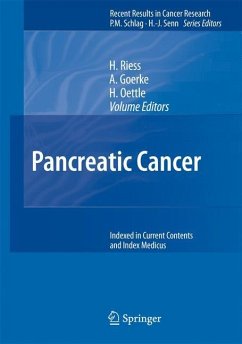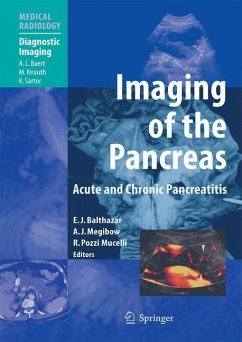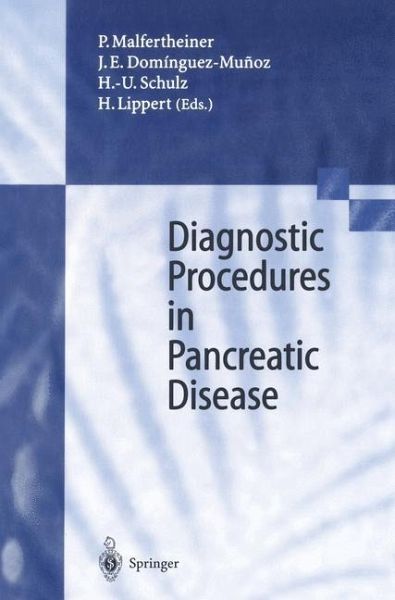
Diagnostic Procedures in Pancreatic Disease
Versandkostenfrei!
Versandfertig in 6-10 Tagen
76,99 €
inkl. MwSt.

PAYBACK Punkte
38 °P sammeln!
"A decade of diagnostic efforts in pancreatic diseases (1985-1995)" The diagnostic access to the pancreas was revolutionized two decades ago by the advent of endoscopic retrograde pancreatography, ultrasound, and com puted tomography. The "hidden" organ was made visible by these diagnostic milestones. In a process of slow but continuous evolution, these imaging tech niques have been further refined and complemented by nuclear magnetic reso nance imaging, and together they provide the standards on which therapeutic decisions depend. Progress has also been made in the functional assessment of th...
"A decade of diagnostic efforts in pancreatic diseases (1985-1995)" The diagnostic access to the pancreas was revolutionized two decades ago by the advent of endoscopic retrograde pancreatography, ultrasound, and com puted tomography. The "hidden" organ was made visible by these diagnostic milestones. In a process of slow but continuous evolution, these imaging tech niques have been further refined and complemented by nuclear magnetic reso nance imaging, and together they provide the standards on which therapeutic decisions depend. Progress has also been made in the functional assessment of the pancreas in various conditions of disease such as acute pancreatitis, chronic pancreatitis, and cancer. New developments in molecular biology also promise more significant achievements in the near future. Ten years ago we gathered a panel of international specialists dedicated to the study and management of pancreatic diseases and invited them to share their experiences with the available diagnostic methods. We have now repeated this process in order to review the past decade of progress in diagnostic procedures in pancreatic disease and to update the current state of expertise and stimulate further developments. The concept of the meeting, held in Magdeburg in December 1995, was to individually analyze the different diagnostic procedures and their specific use in the different disease conditions. The rationale for the interpretation of diagnostic findings is derived from the understanding of basic physiological and pathophysiological events and the resultant morphological alterations.





